Q
What's The Top Speed of Proton Saga? Let's Learn Its Max Speed!
The top speeds of different model years of the Proton Saga vary. The 2018 Proton Saga 1.3 Standard MT has a top speed of 160 km/h. For the 2018 Proton Saga 1.3 Standard CVT, Executive CVT, and Premium CVT, the top speeds of these models are all 155 km/h. Referring to the vehicle information of the 2019, 2022, and 2023 models, the parameter of the top speed is not clearly mentioned. The top speed is affected by various factors such as the vehicle's powertrain, body design, and tire specifications. Conditions like strong power output, a small drag coefficient of the body, and good tire grip are all conducive to the vehicle achieving a higher driving speed.
Special Disclaimer: This content is published by users and does not represent the views or position of PCauto.
Related Q&A
Q
What is the fuel tank capacity of the Proton Saga?
The Proton Saga has a fuel tank capacity of 40 liters. This design can meet the needs of daily commuting and medium - short distance trips while taking fuel economy into account. As a classic model of a Malaysian local brand, the fuel tank capacity of the Saga matches the fuel consumption performance of its 1.3 - liter engine. Under urban driving conditions, it usually offers a cruising range of about 500 kilometers, and the cruising ability will be further improved when driving on the highway.
It's worth mentioning that the fuel tank capacity is one of the important factors to consider when buying a car. It not only affects the driving distance but also relates to the vehicle's weight distribution and chassis design. For users who often drive long distances, a larger fuel tank means fewer refueling times, while urban users may pay more attention to fuel efficiency. The Proton Saga has found a good balance in this regard, ensuring practicality while maintaining the flexibility and economy of a compact car.
In addition, regular inspection of the fuel tank and fuel system is also important for maintaining the vehicle's performance. It is recommended that car owners follow the official maintenance manual for maintenance.
Q
Does Proton Saga Equip with a reverse camera?
Yes, some models of the Proton Saga are indeed equipped with a reversing camera. It specifically depends on the configuration version you choose. For example, the Premium and ACE versions come with a reversing camera as standard, while the Standard version doesn't have this feature. So, it's recommended to select the appropriate configuration according to your needs and budget before making a purchase. The reversing camera is very useful in Malaysia's traffic environment, especially in narrow parking spaces or crowded streets. It helps drivers see the obstacles behind more clearly, enhancing safety. In addition to the reversing camera, the Proton Saga is also equipped with other practical safety features, such as ABS, EBD, and rear parking sensors. These configurations are quite competitive among vehicles in the same class. If you're interested in automotive technology, you can also learn about the assisted - driving features of models from other brands at a similar price point. For instance, some models may offer a 360 - degree panoramic camera or a blind - spot monitoring system, but these usually appear in higher - end versions or brands. Overall, as an economical and practical family car, the Proton Saga offers configurations that match its price in terms of safety and convenience, making it suitable for the daily needs of Malaysian consumers.
Q
Does Proton Saga Equip with ABS?
Yes, some models of the Proton Saga are indeed equipped with the Anti-lock Braking System (ABS), which specifically depends on different versions and years. For example, the 2023 Proton Saga Premium version comes standard with ABS, while older base versions may not have this feature. It is recommended to check the specific configuration list before purchasing a car to confirm. ABS is an important safety technology that can prevent the wheels from locking up during emergency braking, helping the driver maintain control of the vehicle, especially on slippery roads, and it's very practical for Malaysia's rainy climate.
In addition to ABS, modern cars are often equipped with systems such as EBD (Electronic Brakeforce Distribution) and BA (Brake Assist), which together enhance driving safety. As a national brand in Malaysia, Proton has always been committed to improving the safety performance of its vehicles. In recent years, new cars have made significant progress in safety configurations. Consumers can choose the appropriate version according to their budget and needs.
Q
What is the safety rating of the Proton Saga?
The safety configuration of the Proton Saga provides a certain level of safety assurance. It comes standard with an ABS anti-lock braking system, which can prevent the wheels from locking up during emergency braking, allowing the vehicle to maintain a certain steering ability and avoid losing control. The seat-belt reminder function can promptly remind the driver to fasten the seat belt. It is also equipped with 2 airbags, namely the driver-side and front-passenger-side airbags, which can reduce the injuries to the driver and passengers in the event of a vehicle collision.
In addition, the ISO FIX child-seat anchor points make it easy to install a child seat, ensuring the safety of children in the car. Some versions also feature functions such as electronic stability control and hill - start assist. Electronic stability control helps keep the vehicle stable while driving, and hill-start assist can prevent the vehicle from rolling back when going uphill.
However, the specific safety ratings may vary depending on the standards and testing methods of different evaluation agencies.
Q
What is the fuel average of Proton Saga?
The official combined fuel consumption of the Proton Saga is 6.7L per 100km. This car is positioned in the A-Segment. It is equipped with a 1.3L naturally aspirated engine, and its power output can meet the needs of daily driving. With such fuel consumption performance, it has certain advantages among models in the same class. It can help car owners save on fuel expenses, making it suitable for consumers who attach great importance to fuel economy. Whether it's for city commuting or short trips, fuel costs can be controlled, thus reducing the burden of car use.
Q
What is the top speed of a Proton Saga?
The maximum speeds of Proton Saga models vary across different years and versions. The 2018 Proton Saga 1.3 Standard MT has a maximum speed of 160 km/h, while the 2018 Proton Saga 1.3 Standard CVT, Executive CVT, and Premium CVT all have a maximum speed of 155 km/h. Information regarding the maximum speed is not mentioned in the data of models from 2019 - 2023. These figures are the officially announced theoretical maximum speeds. In actual driving, it's quite difficult to reach these speeds due to various limiting factors such as road conditions, vehicle load, driving habits, and traffic regulations.
Q
Which country made the Proton Saga?
The Proton Saga is a car made in Malaysia. Proton, a domestic car brand, was established in 1983 under the leadership of Mahathir, the current Prime Minister of Malaysia. In 1985, Proton's first model, the Proton Saga, made its debut. The "Saga" in the car's name refers to the Adenanthera pavonina, a common type of seed in Malaysia, and it was named by a retired military man. Proton has a complete automobile production line and independent R & D capabilities. As an important model of Proton, the Proton Saga is naturally a representative product made in Malaysia, and it has witnessed the development of the Malaysian automotive industry.
Q
What is VVT in Proton Saga?
VVT stands for Variable Valve Timing, which refers to the engine's variable valve timing technology. On the Proton Saga, this technology can adjust the intake (exhaust) volume, valve opening and closing time, and angle according to the engine's operating conditions, so as to optimize the amount of incoming air and improve combustion efficiency.
Its working principle is to install a solenoid valve on the engine camshaft. By controlling the switch of the solenoid valve, the opening and closing time of the valves is adjusted to control the intake volume. At low speeds, VVT allows the valves to open earlier and close later, increasing the intake volume, enhancing combustion efficiency, boosting power, and reducing fuel consumption. At high speeds, it enables the valves to open later and close earlier, reducing the intake volume, improving engine efficiency, and reducing noise and vibration. However, the VVT technology has the drawback of insufficient torque at medium speeds. Therefore, when choosing a car, consumers should consider whether to opt for the Proton Saga model equipped with VVT technology based on their own driving habits and needs.
Q
Is Proton Saga fuel-efficient?
As one of the most popular economy cars in Malaysia, the Proton Saga's fuel economy performance meets the mainstream level of vehicles in this class. It is equipped with a 1.3L naturally aspirated engine paired with a 4-speed automatic or 5-speed manual transmission. The officially announced fuel consumption data is 5.6 to 6.0 liters per 100 kilometers (the actual fuel consumption may vary slightly depending on driving habits and road conditions). It is a relatively fuel-efficient choice for daily city commuting or long-distance driving.
The car adopts a lightweight body design and an optimized powertrain tuning, which further improves fuel efficiency. It is especially suitable for the usage scenarios in Malaysia with many traffic lights and congested roads. To further enhance the fuel-saving effect, it is recommended to conduct regular maintenance (such as replacing the air filter and using the recommended viscosity of engine oil) and develop driving habits like smooth acceleration and anticipatory deceleration.
In comparison with other models in the same class, its fuel consumption performance is similar to that of competitors like the Perodua Bezza and Honda City. However, the Saga has become a popular choice among budget-conscious consumers thanks to its more affordable price and lower maintenance costs. It's worth noting that the Proton Saga also meets the relevant standards of the EEV (Energy-Efficient Vehicle) certification launched by the Malaysian government, which indirectly confirms that its fuel economy has reached the industry's energy-saving requirements.
Q
What is the body type of the Proton Saga?
The Proton Saga is a four-door sedan. This is the most classic body style for entry-level family cars in Malaysia. Its structure includes a separate engine compartment, passenger compartment, and luggage compartment, which combines daily practicality with fuel economy. As Proton's longest-standing car series, the Saga has always adopted a three-box design since its launch in 1985. The current third-generation model (2023 version) continues this tradition. The body dimensions are 4,413mm×1,689mm×1,491mm, with a wheelbase of 2,465mm, providing spacious seating and a trunk capacity of 395 liters.
Three-box sedans are highly favored in Malaysia. This is mainly due to their well-sealed cabins, which are suitable for the tropical rainy climate, and their storage layouts that are more suitable for family trips. At the same time, this type of vehicle also maintains a relatively high residual value in the second-hand car market. It's worth noting that competitors in the same class, such as the Perodua Bezza, also use a similar three-box structure. However, the Saga has an advantage in terms of ride comfort thanks to its longer wheelbase and more mature chassis tuning. This body style also gives it better stability than hatchbacks when driving at high speeds.
Latest Q&A
Q
How big is Myvi fuel tank?
As one of the most popular national cars in Malaysia, the fuel tank capacity of the Perodua Myvi varies according to different generations and versions. The standard fuel tank capacity of the current third - generation Myvi (from 2017 to present) is 36 liters. It features a lightweight resin fuel tank design, which balances the fuel storage needs and the vehicle's body weight.
The fuel tank size of this B - segment model matches the fuel economy of its 1.3L/1.5L engines. It can provide a cruising range of approximately 450 - 550 kilometers under combined driving conditions, making it suitable for urban commuting and short - distance trips. It's worth noting that the actual available fuel tank capacity might be slightly less than the nominal value. This is because about 5% of the tank space is reserved for fuel expansion as a safety measure.
For owners planning long - distance drives, it is recommended to use the fuel efficiency display function on the Myvi's dashboard to monitor fuel consumption in real - time. Also, it's advisable to develop the habit of refueling when the fuel gauge shows that there is about 1/4 of the fuel left. This can prevent the fuel pump from overheating and also help deal with the situation where gas stations are far apart in some remote areas of Malaysia.
Some comparable models in the same segment, like the Proton Iriz, have a 40 - liter fuel tank. However, the actual cruising range needs to be considered in combination with the engine efficiency. Thanks to Perodua's mature powertrain tuning, the Myvi always maintains a competitive edge in terms of fuel economy.
Q
Does Myvi use CVT?
Yes, the Perodua Myvi does use CVT (Continuously Variable Transmission) technology in some models, especially the newer ones. For instance, the third-generation Myvi, launched in 2017, and its subsequent versions are equipped with D-CVT (Dual Mode Continuously Variable Transmission) to offer a smoother driving experience and better fuel efficiency. CVT technology optimizes engine performance through continuously variable gear ratios. Compared with traditional automatic transmissions, it can adapt to driving conditions more flexibly, thereby enhancing overall driving comfort. However, earlier Myvi models may have used a traditional 4-speed automatic transmission. So, whether a specific model is equipped with a CVT needs to be confirmed based on the model year and configuration. For Malaysian consumers, the advantages of CVT lie in its smoothness and fuel - saving performance during city driving, which is very suitable for the common local traffic conditions. But if you're looking for more direct power feedback, some drivers may prefer the manual transmission version. If you're considering buying a Myvi, it's recommended to check the official specifications or consult a dealer to confirm the transmission type. You can also take a test drive to see if the actual performance of the CVT meets your driving preferences.
Q
What kind of gearbox is Myvi?
The Myvi is equipped with a Dual Mode CVT (D-CVT) transmission, which is a dual-mode continuously variable transmission. Compared with traditional CVT transmissions, it has an additional gear for high-speed driving, which helps the vehicle achieve better fuel efficiency.
In daily driving, this transmission drives the vehicle in CVT mode. Thanks to the operation of the steel belt, the vehicle moves smoothly and linearly, enhancing comfort. What makes the D-CVT special is that it automatically switches to the gear mode when driving at high speeds. Different from CVT transmissions of other brands, when driving at high speeds, the engine speed of vehicles with ordinary CVT transmissions will increase, the engine noise will get louder, and the fuel consumption will rise. Moreover, the power will decline after exceeding the maximum horsepower speed. However, after the gear of the D-CVT engages, the engine speed decreases, allowing the engine to maintain a reasonable speed and providing the vehicle with continuous and abundant power.
Q
Are Myvi and vios the same engine?
Some models of the Myvi and the Vios use the same engine. Daihatsu and Perodua have a joint - venture engine production plant in Negeri Sembilan, Malaysia, which provides power for multiple models including the Vios. Some models of the Vios and the Myvi are equipped with the 1.5L Dual VVT - i engine. This engine features high efficiency, reliability, and economy. Although its power is not extremely strong (the official 0 - 100km/h acceleration time of the Myvi 1.5 is 10.2 seconds), its low fuel consumption and durability are well - loved by consumers. However, these two cars have different positioning and market targets. Even if they share the engine platform, there are differences in vehicle tuning, configuration, and the overall driving experience.
Q
How many cylinders are in the MYVI?
As one of the most popular national cars in Malaysia, the engine configurations of the Perodua Myvi vary according to different years and versions. Currently, the mainstream models are equipped with two types of Dual VVT - i four - cylinder naturally aspirated engines, namely the 1.3L (1NR - VE) and 1.5L (2NR - VE). Therefore, all Myvi models feature a four - cylinder design. This four - cylinder layout ensures smooth power delivery while taking fuel economy into account, making it highly suitable for the urban road conditions in Malaysia.
It's worth mentioning that four - cylinder engines, due to their simple structure and low maintenance costs, are widely used in B - segment models in the local market. For example, the Proton Saga and Honda City also adopt a similar layout. The 1.5L version of the Myvi can output 102 horsepower and 136 Nm of torque. Coupled with its lightweight body design, it can offer a well - balanced performance whether driving on the congested streets of Kuala Lumpur or cruising on the highway.
For readers who want to learn about engine technology, they can note that the Dual VVT - i system used in the Myvi can intelligently adjust the valve timing. This technology shared by Toyota helps to improve fuel efficiency by about 15%. That's why the Myvi has remained one of the most fuel - efficient cars in Malaysia for years.
View MoreRelated News
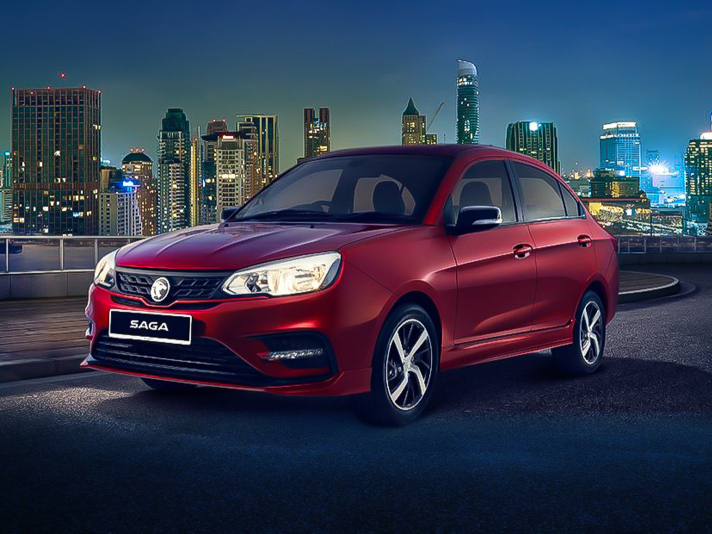
Proton Saga Interior Review: Affordable Yet Stylish for Everyday Use
WilliamJul 17, 2025
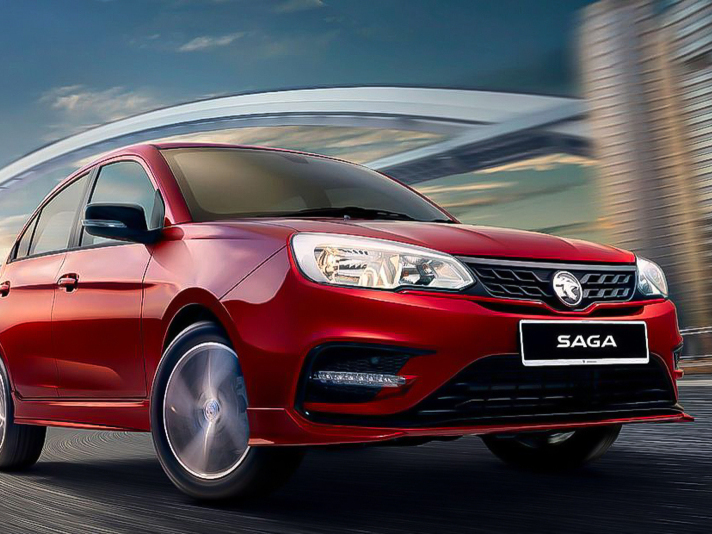
2025 Halfway Mark: All-New Proton Saga Coming Soon!
JohnMay 30, 2025
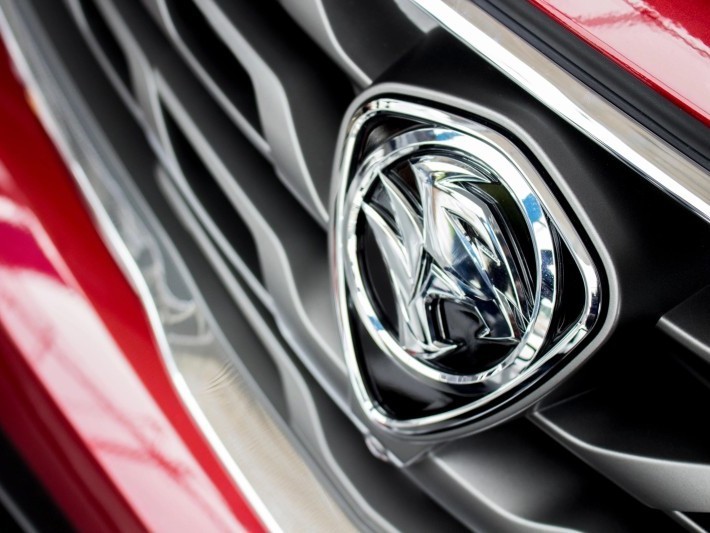
Proton Recorded Sales of 13,918 Vehicles in March, Marking a Significant MOM Increase of 23.9%
AshleyApr 10, 2025
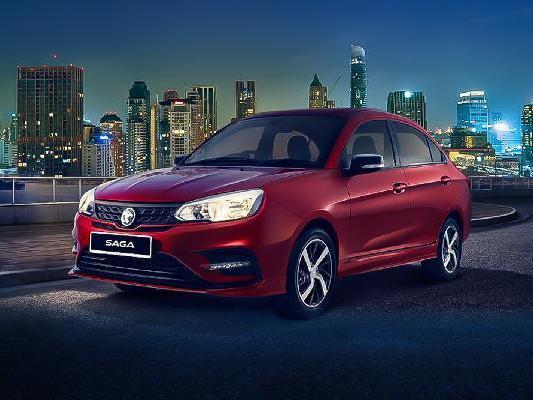
Proton Saga: A Clear Overview of Configurations and Costs of models
LienMar 25, 2025

Latest news on the 2025 Proton Saga, with ADAS support provided by iMotion Technology
JohnJan 6, 2025
View More








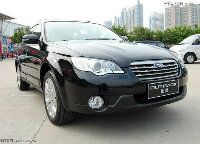



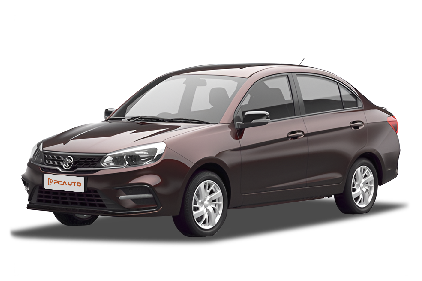





Pros
Cons